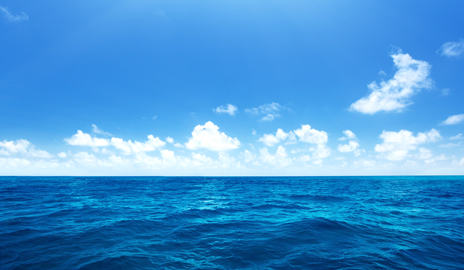
New research by Yale University scientists challenges a long-standing paradigm for temperature variability in the Pacific Ocean, casting doubt on the existence of a past period of “permanent” El Niño-like conditions and suggesting that the tropics could grow markedly hotter.
“There’s good news and bad news about future global warming,” said Mark Pagani, professor of geology and geophysics at Yale and an author of the research, published April 4 in the journal Science.
“The good news is that global warming does not drive the Pacific Ocean into a permanent El Niño-like condition with all the other regional climate impacts that come with that. The bad news is that the tropics will warm as we continue to add greenhouse gases to the atmosphere — and the recent past was probably much warmer than generally assumed.”
Modern El Niño conditions are characterized by unusually warm surface water in the eastern equatorial Pacific, and a very low overall equatorial Pacific temperature gradient. The quasi-periodic phenomenon’s effects on global weather patterns can be dramatic, including extreme rainfall in some places (Texas, for example) and drought elsewhere (Indonesia and Australia).
A conventional view holds that sea surface temperatures in the warmest part of the equatorial Pacific — the vast western “warm pool” — remained relatively constant for millions of years. Given that ocean temperatures elsewhere rose during this time, the warm pool’s stable temperature implied a tropical ocean “thermostat” or temperature control mechanism, Pagani said.
But in a new reconstruction of ancient Pacific sea surface temperatures covering 12 million years, Pagani and Yale doctoral candidate Yi Ge Zhang found that Pacific warm pool temperatures were notably higher 12 million years ago than previously thought — as much as 4°C warmer. Their results indicate that all parts of the Pacific warmed during past periods of global warming, suggesting greater variability of ancient ocean temperatures and the absence of any tropical temperature control mechanism or “permanent El Niño-like” conditions.
“El Niño conditions today are characterized by very low equatorial Pacific temperature gradients,” Pagani said. “It seemed from previous data that the equatorial Pacific maintained similarly low temperature gradients in the past and thus reflected a ‘permanent’ state characteristic of the modern El Niño. Our work dispels this idea by showing that the processes responsible for today’s strong equatorial temperature gradient, with a western warm pool and the eastern cold tongue, were also operating in the past. There is no evidence of a tropical thermostat that keeps the tropics from overheating.”
He added, “Building a better understanding of the world and clarifying the nature of a warmer Earth helps us better prepare for the inevitable impact of our behavior.”
The revised ancient ocean temperatures are based on analysis of biomarkers.
The paper is titled “A 12-million year temperature history of the tropical Pacific Ocean.”
Yi Ge Zhang is lead author. Zhonghui Liu is a co-author. Pagani is also director of the Yale Climate and Energy Institute.
The Schlanger Fellowship (U.S. Science Support Program for IODP) and the National Science Foundation provided support for the research.
(Image via Shutterstock)